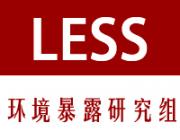Citation:
摘要:
Exposure to fine and ultrafine particles as well as particulate polycyclic aromatic hydrocarbons (PAHs) by commuters in three transportation modes (walking, subway and bus) were examined in December 2011 in Beijing, China. During the study period, real-time measured median PM2.5 mass concentration (PMC) for walking, riding buses and taking the subway were 26.7, 32.9 and 56.9 mu g m(-3), respectively, and particle number concentrations (PNC) were 1.1 x 10(4), 1.0 x 10(4) and 2.2 x 10(4) cm(-3). Commuters were exposed to higher PNC in air-conditioned buses and aboveground-railway, but higher PMC in underground-subway compared to aboveground-railway. PNC in roadway modes (bus and walking) peaked at noon, but was lower during traffic rush hours, negatively correlated with PMC. Toxic potential of particulate-PAHs estimated based on benzo(a)pyrene toxic equivalents (BaP TEQs) showed that walking pedestrians were subjected to higher BaP TEQs than bus (2.7-fold) and subway (3.6-fold) commuters, though the highest PMC and PNC were observed in subway. (C) 2015 Elsevier Ltd. All rights reserved.
附注:
Times Cited: 8ZHU, TONG/H-6501-2011; Zhang, Qunfang/D-8291-2014; Yan, Caiqing/L-4180-2017Zhang, Qunfang/0000-0003-3012-0911;98681873-6424
